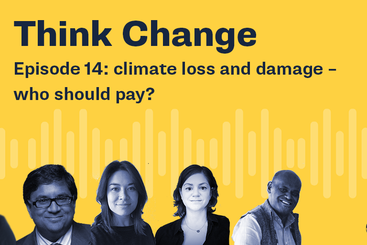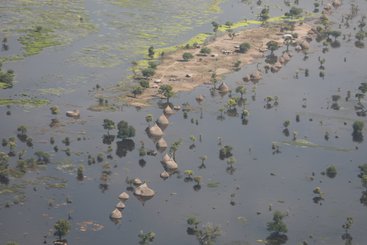Loss and damage funding arrangements is now a main agenda item at COP27, for the first time in the history of United Nations climate negotiations. This has renewed some hope for climate justice as an incremental step towards supporting the countries which are particularly vulnerable to climate change – often those that have contributed the least to global emissions.
Climate change is already causing catastrophic loss and damage around the world. Recent flooding in Pakistan, for example, is estimated to have caused total economic losses of over USD 15 billion, with damage to housing, agriculture, livestock, transport and communications. And these are only the consequences that can be measured economically. Reports out of Pakistan also speak to harm or loss in relation to human health and education, which cannot be easily quantified in economic terms. This is commonly referred to as non-economic loss and damage (NELD). While difficult to monetise, addressing such loss and damage tends to have a massive price tag.
Climate-induced NELD is also manifesting in other areas including cultural identity and heritage, ecosystems and biodiversity, and human life, to name a few. What this rather mundane acronym really captures then, is everything that makes life worth living – and indeed, possible. Yet such losses have been relegated to the fringes of climate negotiations and policy, particularly when exploring funding arrangements.
A brief history of NELD in the UN climate convention
Non-economic loss and damage has been on the margins of the United Nations Framework Convention on Climate Change (UNFCCC) process since its inception. However, loss and damage as a whole was only formally included in official text at the Bali Conference of the Parties (COP) in 2007.
Non-economic loss and damage was not specifically referenced until the Doha COP in 2012, following which it was included as one of the action areas for the new Warsaw International Mechanism for loss and damage associated with climate change impacts (WIM) and its Executive Committee (ExCom), established in 2013. The WIM has three functions:
- Enhance knowledge of approaches to address loss and damage;
- Coordinate and lead relevant organisations on loss and damage;
- Enhance action and support for loss and damage, including finance, technology and capacity-building.
The Santiago Network for Loss and Damage was established at COP25 in Madrid under the auspices of the WIM, but its functions were not agreed until COP26 in Glasgow: to catalyse technical assistance through organisations and experts to implement relevant approaches to avert, minimise and address loss and damage in developing countries. Finally, negotiations over the way it works – its governance and structure – are currently ongoing at COP27. Concrete progress here is vital to take the WIM and its Santiago Network from discussions to action.
Prospects for NELD at COP27
The months ahead of each COP set the scene for the final negotiations. Milestones in 2022 for loss and damage included the annual report of the ExCom, and the submissions of parties and organisations on the Santiago Network, specifically on how it should work and what progress they have made on technical assistance for loss and damage. Even here, however, NELD either goes unmentioned or is discussed only vaguely. In other words, the groundwork was not laid for decisive negotiations in Sharm El-Sheikh.
One of ExCom’s five thematic expert groups focuses solely on NELD. This group is expected to develop technical guides, an awareness strategy, and knowledge products as well as foster partnerships to address NELD. To date, it has focused above all on clarifying the nature of NELD and calling attention to this issue. In other words, progress has been slow and focused mainly on the first function of the WIM – enhancing understanding – and much less on coordination or action and support for NELD.
Two questions on NELD may be answered at this COP.
First, how can NELD be incorporated into the Santiago Network? Parties have agreed that the Network should include ‘relevant organisations’ to address the varied needs of developing countries. They should further recognise that overwhelming need exists across the spectrum of NELD. Therefore, the Network’s membership must be expanded to organisations which deal with NELD like the United Nations Educational, Scientific and Cultural Organization (UNESCO) and the World Health Organization (WHO), as well as indigenous peoples and local community groups whose expertise in their own contexts of loss and damage cannot be rivalled.
Second, how can Parties ensure that whichever organisation hosts the Santiago Network’s secretariat has sufficient expertise on NELD? The draft text from week 1 of negotiations at COP 27 currently does not include evaluation criteria assessing whether the prospective hosts has experience or networks relevant to NELD. The text should be revised to ensure that a host is selected which can ensure the Network’s focus is balanced across both economic and non-economic loss and damage.
What is clear is that efforts on NELD to date focus far too much on words, not actions. The prospect of this changing at COP27 seems slim, with only a glimmer of hope from the Scottish government’s pledge of funding specifically for NELD. While this will, hopefully, be the first of many such steps, it seems likely that the best chance for progress is successful negotiations on wider loss and damage – especially more robust, new, additional, and available finance and fit-for-purpose funding arrangements – to eventually drive more interest and action on NELD.
But the clock is ticking.





